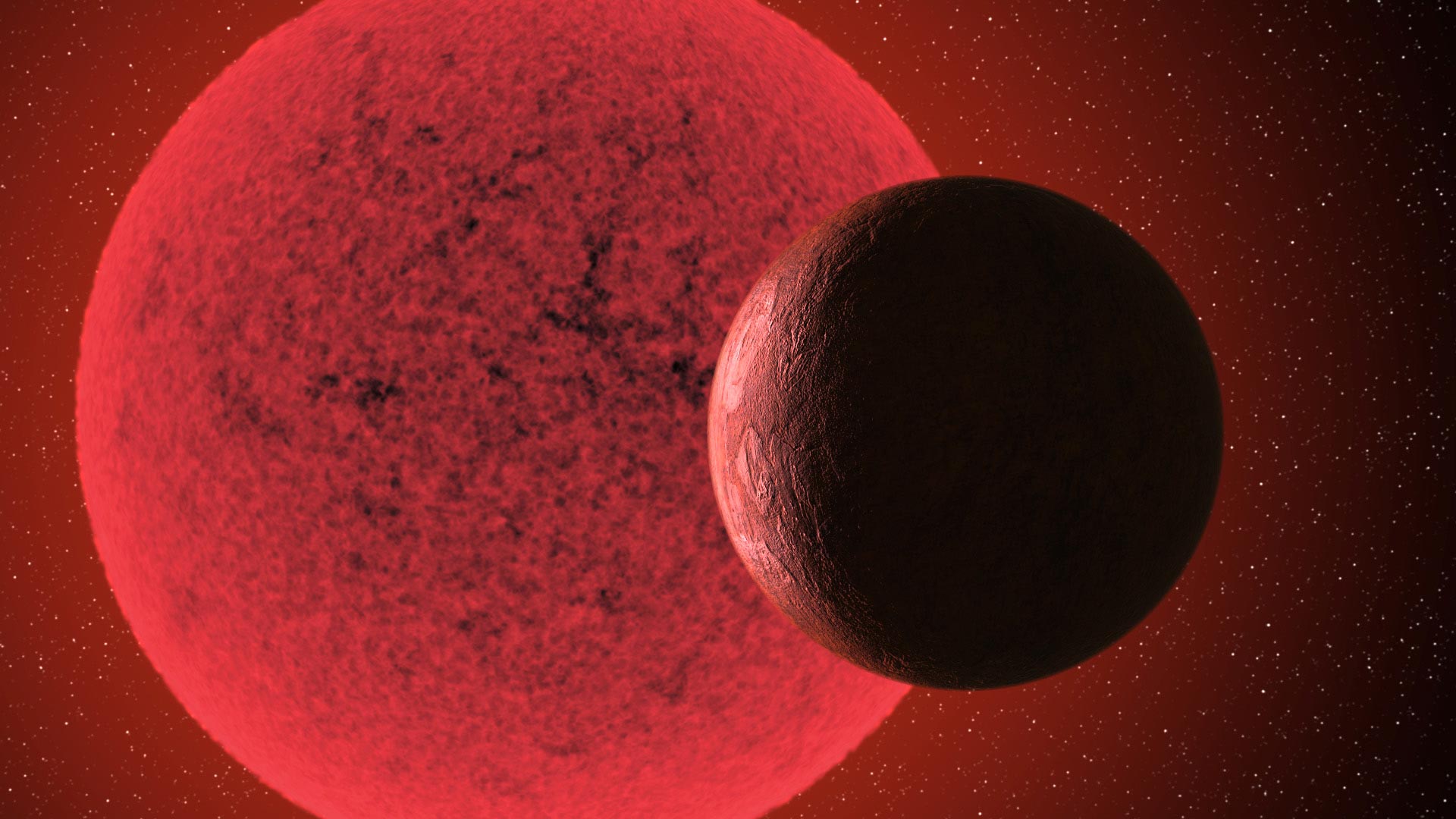
Artistic impression of the super-earth in an orbit around the red dwarf star GJ-740. Credit: Gabriel Pérez Díaz, SMM (IAC)
In recent years, a comprehensive study of red dwarf stars has been done to find exoplanets in orbit around them. These stars have an effective surface temperature between 2400 and 3700 K (more than 2000 degrees cooler than the sun) and masses between 0.08 and 0.45 solar masses. In this context, a team of researchers led by Borja Toledo Padrón, a doctoral student at Severo Ochoa-La Caixa at the Instituto de Astrofísica de Canarias (IAC), specializing in the search for planets around this type of star, a super-discovered Earth orbits the star GJ 740, a red dwarf star located about 36 light-years from Earth.
The planet orbits its star with a period of 2.4 days and its mass is about 3 times the mass of the earth. Because the star is so close to the sun and the planet so close to the star, this new super-earth could be the object of future investigations with telescopes of very large diameter at the end of this decade. The results of the study were recently published in the journal Astronomy & Astrophysics.
‘This is the planet with the second shortest orbital period around this type of star. The mass and period indicate a rocky planet, with a radius of about 1.4 Earth radii, which in future observations with the TESS satellite, ”explains Borja Toledo Padrón, the first author of the article. The data also indicate the presence of a second planet with an orbital period of 9 years, and a mass comparable to that of Saturn (almost 100 Earth masses), although the radial velocity signal may be due to the magnetic cycle of the star (similar to that of the sun), so more data are needed to confirm that the signal is really due to a planet.
The Kepler mission, which is recognized as one of the most successful in detecting exoplanets using the transit method (this is the search for small variations in the brightness of a star caused by the passage between him and us of planets orbiting it), discovered a total of 156 new planets around cool stars. From its data, it is estimated that this type of star houses an average of 2.5 planets with an orbital period of less than 200 days. The search for new exoplanets around cool stars is driven by the smaller difference between the mass of the planet and the mass of the star compared to stars in warmer spectral classes (which facilitates the detection of the planets’ signals), as well as the large number of this kind of star in our Milky Way, ”says Borja Toledo Padrón.
Cool stars are also an ideal target for searching for planets via the radial velocity method. This method is based on the detection of small variations in the velocity of a star due to the attraction of a planet in orbit around it, using spectroscopic observations. Since the discovery in 1998 of the first radial velocity signal of a exoplanet around a cool star, so far, a total of 116 exoplanets around this class of stars have been discovered using the radial velocity method. “The biggest problem with this method is the intense magnetic activity of this type of star, which can produce spectroscopic signals very similar to those of an exoplanet,” said Jonay I. González Hernández, an IAC researcher who a co-author of this article.
Reference: “A super-Earth on a close-in orbit around the M1V star GJ 740: A HADES and CARMENES collaboration” by B. Toledo-Padrón, A. Suárez Mascareño, JI González Hernández, R. Rebolo ,, M. Pinamonti , M. Perger, G. Scandariato, M. Damasso, A. Sozzetti, J. Maldonado, S. Desidera, I. Ribas, G. Micela, L. Affer, E. González-Alvarez, G. Leto, I. Pagano , R. Zanmar Sánchez, P. Giacobbe, E. Herrero, JC Morales, PJ Amado, JA Caballero, A. Quirrenbach, A. Reiners en M. Zechmeister, 7 April 2021, Astronomy & Astrophysics.
DOI: 10.1051 / 0004-6361 / 202040099
The study is part of the project HADES (HArps-n red dwarf exoplanet survey), in which the IAC cooperates with the Espai Institute of Sciences (IEEC-CSIC) of Catalonia, and the Italian program GAPS (Global architecture of planetary systems), the purpose of which is to detect and characterize exoplanets around cool stars, in which they are used HARPS-N, on the Telescopio Nazionale Galileo (TNG) at the Roque de los Muchachos Observatory (Garafía, La Palma). This detection was possible due to a six-year observation campaign with HARPS-N, supplemented by measurements with the CARMENES spectrograph on the 3.5 m telescope at the Calar Alto Observatory (Almería) and HARPS, on the 3.6 m telescope at the La Silla Observatory (Chile), as well as photometric support of the ASAP and EXORAP recordings. IAC researchers Alejandro Suárez Mascareño and Rafael Rebolo are also taking part in the work.
